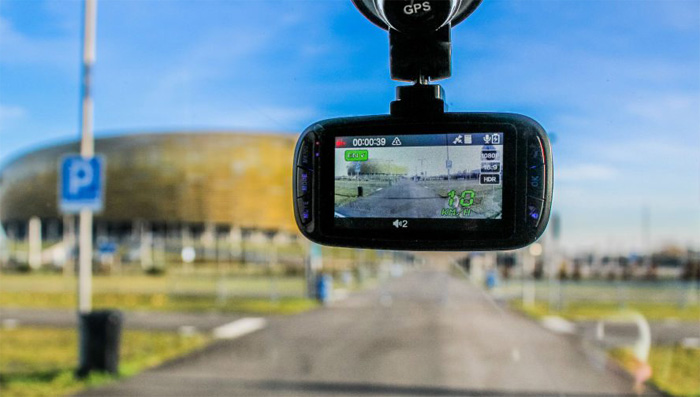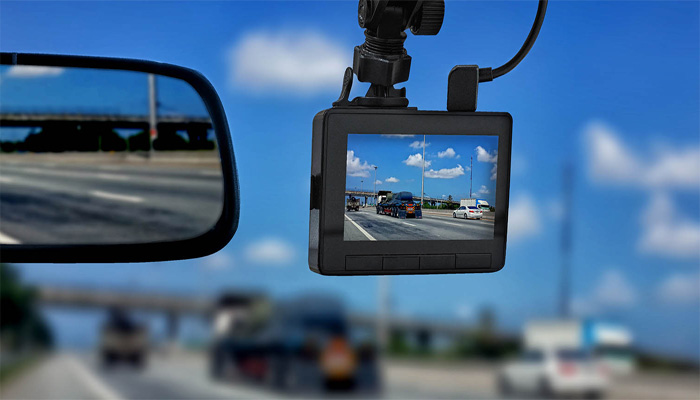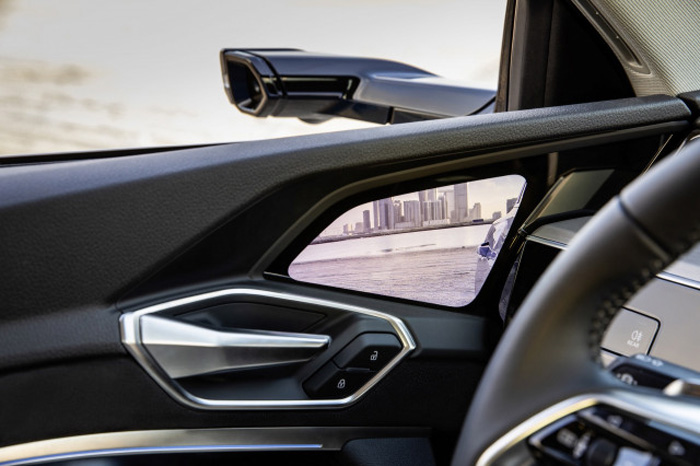Dash Cam vs. Mirror Cam: What Should You Consider Buying?
by Chris Lewis.
If you are stuck in a dilemma about buying a dashcam or a mirror cam, you are not alone. We have been there, done that.
When it comes to our favorite car, we want the best for it. There is no compromise with its security too. An onboard recording camera is one of the initial steps for it.
There are so many options to choose from. There is a slight difference when dashcam vs. mirror cam comes into consideration.
A mirror cam is an advanced dashcam within the rearview mirror. A traditional dashcam is only for recording purposes. Thus, the mirror cam is versatile, but is it worth it?
So, we have all the (well, most of them) answer to this burning question. Let's dive in!
Contents
Dash Cam vs. Mirror Cam - An Overall Comparison

We went through many popular dash and mirror cam's features to compare both onboard recorders. Here is an in-depth comparison of dashcam vs. mirror cam for you.
Price
An adequate standard dash cam can cost you around $60 up to $175. The premium dash cams are feature-rich, and the facilities are more than you could ask for.
However, the low end of the price point offers a satisfactory number of features to meet your needs.
If you want to purchase a mirror dashcam, the minimum price is $130. It will only avail basic features with not many extra functions. The premium ones come in hefty price tags.
Multifunctional

Dash cams are dedicated devices for recording accident footage when you are on the road.
It also acts as a surveillance camera when you leave your car unattended. This device is solely made for recording purposes.
On the other hand, mirror cams act as the rearview mirror, onboard recording device, and surveillance camera.
It is a versatile device where you get a minimum of two types of usage. It is a perfect example of innovative technology.
More of the benefits are you get two in one device. The mirror cam saves space from the car's front view as there is no extra device on the windshield or dashboard.
Safety
Dash cams are safer than mirror cams for various reasons. For example, when you are driving, you can easily view real-time footage on a dashcam.
It doesn't create any distractions while driving. If you mount it on the windshield away from the view, it is a safer option for road safety.
However, mirror cams take up most of the space on the rearview mirror. If you try to play real-time footage when driving, this may cause hazardous incidents.
You will not be able to see what is happening at the back of your car. The idea of a cam in a mirror is interesting, but it does compromise safety a little bit.
Theft
The risk of theft is low for dash cam because it senses movement in front of the car and turns on the alarm system as rapidly as possible.
These are designed with secrecy in mind. The priority is to hide it in plain sight.
Mirror cam has a very low risk of theft. This is due to its discreet design. The thief will not be able to bypass its parameter easily.
However, when the cam is not noticeable, the thief might carelessly attempt theft and get caught instantly.
Setup
Dashcams have the most effortless installation process because it uses suction mount to hold the cam on the dashboard.
So if there are multiple cameras like front and rear, you can easily set it up. There is no need for extra help of any sort.
In comparison to that, mirror cams are more complicated. Its installation requires more expertise and time.
If there is a rear camera, you need to pass wires through the car to supply power. It requires professionals to do so.
Firmness
Dashcam uses either uses adhesive tape or a suction mount to cling onto the dashboard or windshield. When the car is jittering or too extreme weather, the suction mount comes off.
Also, the tape doesn't hold too well. It comes off and is a nuisance when you are driving in a critical situation. It is one of the main concerns of dash cam users.
Mirror cams are set up with clips on the mirror holder. No matter how rocky road or extreme weather, this camera stays in place.
Its setup remains unbothered in all situations. It is a big relief when you are documenting in extreme terrain.
Placement
You can place dash cams anywhere in the car where you think you need surveillance. You can also adjust it to various angles.
For example, you can mount it on the dashboard, where it was initially placed in old times. Now, most of the drivers place it on the windshield to keep it away from the face.
Mirror cams replace your stock rearview mirror. The surveillance camera is hung on the clips that held the mirror previously.
It usually fits in place of any mirror hanger and doesn't need any extra setup frame.
Video quality
All the dash cams at least have a medium video quality. They have a wider screen to display clear footage of an accident. You have HD, QHD options with videos and wide-angle coverage.
Mirror cams have a comparatively smaller resolution. It is because they are displayed inside the mirror setup.
The video quality can range from low to high. It really depends on the price that you pay for it. The premium ones have better video quality.
WiFi
Due to the specific design, the manufacturer has to adjust many features in a compact space. So, mirror cams don't usually have a built-in WiFi system integrated into them.
The high-quality ones might have this feature. However, it is uncommon in mid-range mirror cams.
Most of the dash cams do have WiFi in them. Customers anticipate such features in their dash cams or any onboard surveillance camera. It helps with real-time footage viewing and other extra features.
Build
Dash cams are usually compact. It is so to make it discreet. But the size ranges from small to medium. There is another factor other than discreetness responsible for the small size.
It is the mounting process. A suction cup or adhesive glue doesn't have much strength to hold a big and heavy device on the windshield. Thus, they make it small and light.
In comparison, mirror cams are large or very large. They are ambiguous in design. So a large and heavy rearview mirror doesn't cause any problem with the above factors.
Coverage
Dashcam simultaneously records the front and rear of a car. It minimum covers a total of 200 degrees field of view.
Mirror cams also record the front view. And the rearview feature depends on the model. So, you may get less coverage with it.
Alert system
Most of the dashcam models feature a smart alert system to prevent accidents. These include speed restrictions and other road security measurements.
However, mirror cams don't avail this feature in most of the models.
Storage
Dashcams have higher storage capacity by default. This helps to store more files from the G-sensor feature. Mirror cams storage capacity ranges from low to high depending on the model and price.
What should you consider buying?

As we have seen before, there are positives and drawbacks to both types of cameras. Some have advantages in one field; some have in others. You have to choose what serves you best.
What you intend to do with it, Will determine which one you choose. Our humble advice will make your decision-making process a bit easier.
There are so many features available in dashcams and mirror cams. But there are some which play a significant role in use.
So here are our thoughts on what you should consider buying when looking for an onboard recording device.
The camera must cover a wide angle of footage. Thus, it is essential to have front and rear cameras.
Another important factor is safety. the driver's attention on the road is the most crucial part of any journey.
If the onboard camera disrupts drivers' attention, it might cause severe damage. Thus, the safety measure will do more harm than good.
A must-have feature for a dashcam or mirror cam has a discreet design. It deceives the thief to think there is no safety measure for the car.
Therefore, they don't feel alert when attempting a theft. That's how they get caught red-handed.
Verdict
When we compare features and factors of dashcams and mirror cams, dash are we ahead. But it doesn't mean mirror cams are far behind.
When you consider safety and better surveillance feature, the dashcam gets more points. On the other hand, innovation and versatility are things mirror cams are famous for.
As for secrecy, both are equally capable. Now you have to decide which factors will affect your driving and parking the most. Prioritize your needs and see who stays on the top features most of the time.
This will save you from future regrets and bad buys. With the right recorder, you will be protected from 360.
 |
 |
 |
 |

About Chris Lewis.
Chris Lewis is a passionate individual with a deep affinity for the world of automobiles. From a tender age, his fascination with cars was nurtured by his father, a seasoned mechanic based in the vibrant city of San Francisco. Growing up under the watchful guidance of his skilled father, Chris developed an early aptitude for all things automotive.
Thoughts on "Dash Cam vs. Mirror Cam: What Should You Consider Buying?"
 |
 |
 |
 |
Get FREE Filters now. Or latest free tools from our best collections.
Disable Ad block to get all the secrets. Once done, hit any button below
 |
 |
 |
 |